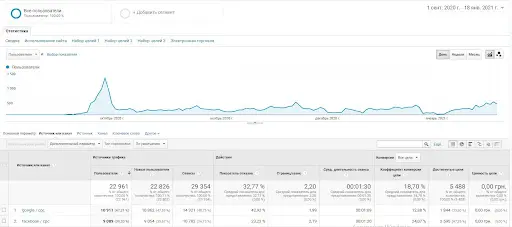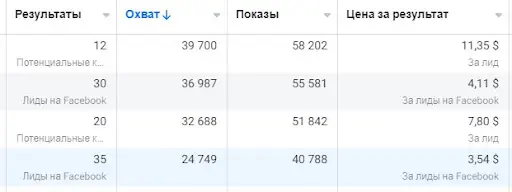

A real estate client approached us with high lead costs and many non-targeted requests (over 70%) for several projects. The cost per lead was over $15, and the cost per form submission on the site was over $30.
Purpose: to reduce the cost of one lead and the price of an application on the site.
Geography of presence: Kyiv and region.
Launched:
- 4 campaigns;
- 13 ad groups;
- 5 ads divided by format/audience segment.
A few days after the launch of the test, we saw clear favorites. After receiving this information, we began optimizing new ad campaigns by eliminating low-performing segments of selected TAs and ads. Instead, we focused on those that showed the highest CTR and engagement rates.

The number of conversions on Facebook is lower, but the bounce rate is also lower. The number of pages per session, the average time on the site, and the number of achieved goals has increased. All this indicates excellent results of the advertising campaign on Facebook, although traffic from Google, according to many, is «warmer».
As we can see, the cost per lead is getting lower and lower.
We have significantly reduced the cost of a lead and the cost of a conversion. We have achieved the price and the number of leads accepted in the real estate industry.

A good strategy, perfectly selected digital tools, and their effective application will allow the business to increase profits, grow the customer base, and form recognition and loyalty. Do you want something like that? Contact us.
You have taken the first step towards effective online marketing. Our managers will contact you and consult you soon.